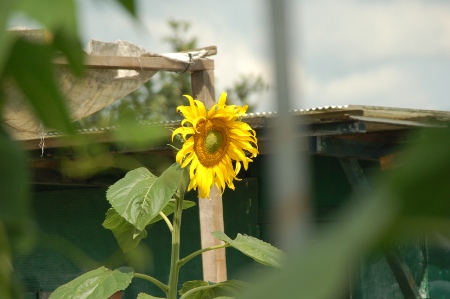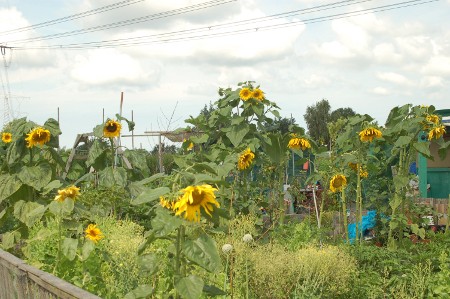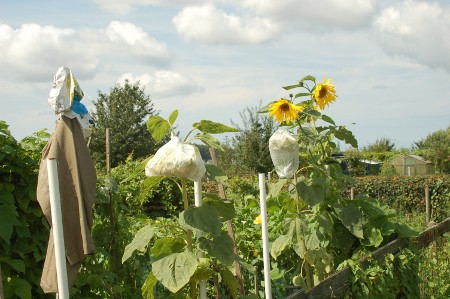I’ve posted before about my black alder trees. I’m really pleased with them, and I thought it was time for an update. They are now almost 2 years old, and I think I’m just really starting to see some of the benefits.
They are nitrogen fixing trees, meaning they put nitrogen into the ground as they grow. Many gardeners plant beans or peas for this reason, but the difference with a nitrogen fixing tree is it is perennial so it keeps growing and it’s also large and deep rooted, so it fixes a lot of nitrogen deep into the ground. Black alders are also a native species for me, which is an important reason why I choose it and like it. Now that I know what I’m looking for, I see them in a lot of wild places.
It’s a tree, which means if you let it grow it will get huge. I don’t do that. As well as getting big, it doesn’t mind being severely cut back. Whenever I think it’s getting on the large side or it’s in the way, I just whack off as much as I want and it cheerfully grows back. About the size you see in this picture is what I generally find best, a slightly overgrown stump.
By cutting it back, it also helps it release it’s nitrogen into the ground. By cutting leaves and branches off the top, it causes some of it’s roots to die and rot, and so release nitrogen. Also, by cutting the tree back around the time it’s trying to produce seeds, it prevents it from putting resources into producing seeds and so consuming some of the nitrogen it already fixed. It also keeps it from producing too many weeds.
By now a number of these trees are becoming well established, and they are making a noticeable difference to their surroundings. At the beginning they caused a bit of a weed problem, because they were fixing nitrogen close to the surface. As they became established, they fix nitrogen much deeper, meaning there was no immediate weed problem and the overall improvement in soil health of the area meant fewer weeds in general. I would say however the benefits of the trees are not seen much beyond a meter or 2 from the tree itself.
One of the things I decided to experiment with was companion planting my garlic with some black alder trees. I had little choice in fact, because the trees were established were it was time to rotate the garlic crop too. Rather than removing the trees, I decided to see how it went.
Normally garlic, and alliums in general, are considered companion ‘enemies’ to nitrogen fixing plants. They tend to stunt one another’s growth. What I found was quite the opposite. I couldn’t really say if the alder’s growth was stunted, as they grow pretty fast regardless, but the garlic planted near the trees developed quite large and healthy bulbs. I guess because the roots of the alder are so deep, there’s little or no conflict between the plants.
I’m so happy with the alders in fact, this winter I’m going to try to buy some more. I found them before on a local EBay equivalent for €1 per tree, and I’m going to see if I can find the same thing again. I guess I have 20 or so trees, and I would like to double that number. In particular, I would like to plant new trees in poorer parts of my garden, and perhaps remove some of the larger trees that are getting a little in the way by now and aren’t needed any more.
If you want to try something similar in your garden, I suggest looking for a native species that fixes nitrogen. There are quite a number of possibilities. By getting a native species, you know the plant will grow and thrive but at the same time not naturalize and turn into an invasive weed. In some climates, the black alder is considered invasive.






